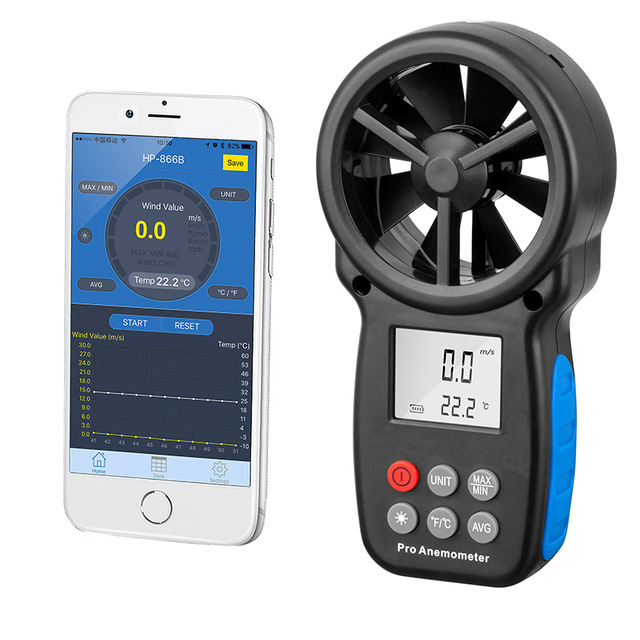Understanding Various Sorts Of Anemometers for Different Applications
Understanding Various Sorts Of Anemometers for Different Applications
Blog Article
Anemometers Revealed: Comprehending Their Relevance in Environmental Surveillance and Precaution
The duty of anemometers in environmental monitoring and security steps is commonly ignored, yet their importance is obvious. From meteorology to air travel safety and security, anemometers play an essential role in giving accurate information that notifies decision-making processes and enhances total safety and security.
History of Anemometers
The evolution of anemometers can be traced back to the ancient people where rudimentary wind measuring gadgets were initial utilized. These early wind measurement tools laid the foundation for the advancement of more sophisticated anemometers with time. Among the earliest recognized anemometers was the hemispherical mug anemometer invented by Leon Battista Alberti in the 15th century. This design contained four hemispherical mugs that gathered wind power, offering a measurement of its strength based on the rate of rotation.
In the 18th century, the distinguished scientist John Thomas Romney Robinson introduced the Robinson anemometer, which featured four hemispherical cups placed on straight arms that expanded from a main axis. This design became a criterion in atmospheric measurements as a result of its accuracy and dependability. For many years, innovations in innovation led to the growth of more modern anemometers, consisting of ultrasonic anemometers and laser Doppler anemometers, offering enhanced accuracy and effectiveness in determining wind speed and direction. The history of anemometers showcases an impressive journey of technology and progression in the area of weather forecasting.
Sorts Of Anemometers
Throughout the field of weather forecasting, different kinds of anemometers have been created to properly measure wind rate and instructions. Sonic anemometers make use of ultrasonic signals to measure wind rate and instructions accurately. Hot-wire anemometers run based on the concept that the cooling impact of wind on a heated cord is symmetrical to the wind speed.
Applications in Weather Forecasting
Having reviewed the various kinds of anemometers utilized in weather forecasting for determining wind speed and direction, it is necessary to explore their useful applications in the field. Anemometers play a critical function in meteorology by supplying real-time and precise data on wind problems (anemometer). Meteorologists use anemometers to keep an eye on wind speed and instructions to anticipate climate patterns, issue warnings for serious weather events like twisters, hurricanes, and storms, and assess atmospheric problems for aviation safety and security
In meteorology, anemometers assist in comprehending local and regional wind patterns, which are vital for predicting weather adjustments and identifying climatic patterns. These devices are also made use of in research to research microclimates, urban warm islands, and air contamination dispersion. Furthermore, anemometers are utilized in agriculture to maximize crop management methods, such as watering and chemical application, based on wind conditions.
Relevance in Air Travel Security
An essential aspect of guaranteeing aeronautics safety hinges on the careful surveillance of wind conditions utilizing anemometers. Anemometers play a crucial duty in aeronautics by supplying real-time information on wind speed and direction, aiding pilots in making educated decisions throughout flight, take-off, and touchdown. Strong and unpredictable winds can dramatically influence airplane operations, making it important for air travel authorities to count on exact wind dimensions to make certain the security of passengers and crew.

In the dynamic setting of aeronautics, here where also small changes use this link in wind speed and direction can have profound effects, anemometers stand as vital tools for advertising secure and risk-free air travel.
Function in Environmental Research
Anemometers play an important function in environmental research study by providing essential data on wind speed and instructions. By properly measuring wind attributes, anemometers aid researchers evaluate the activity of pollutants in the air, examine the influence of industrial discharges, and predict the spread of impurities in the environment.


Verdict
In verdict, anemometers have played a vital function in environmental surveillance and precaution. With an abundant background and various kinds available, these gadgets have been widely made use of in meteorology, air travel safety and security, and environmental research. Comprehending the relevance of anemometers is essential for precisely measuring wind rate and direction, which is vital for forecasting weather patterns, making certain risk-free aeronautics procedures, and performing ecological researches - anemometer. Their contributions to these fields can not be underestimated.
One of the earliest well-known anemometers was the hemispherical mug anemometer invented by Leon Battista Alberti in the 15th century. Over the years, developments in innovation led to the development of even more contemporary anemometers, including ultrasonic anemometers and laser Doppler anemometers, providing boosted accuracy and performance in determining wind speed and direction. Hot-wire anemometers run based on the concept that the cooling impact of wind on a warmed cord is proportional to the wind speed. Meteorologists make use of anemometers to monitor wind rate and instructions to forecast weather condition patterns, problem warnings for serious weather occasions like storms, twisters, and tornados, and examine climatic problems for aviation security.
Comprehending the value of anemometers is essential for accurately gauging wind speed and direction, which is crucial for forecasting weather patterns, ensuring safe aeronautics procedures, and carrying out ecological studies. (anemometer)
Report this page